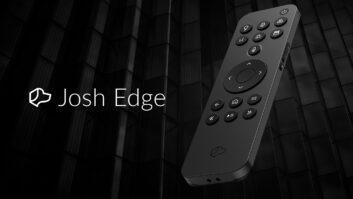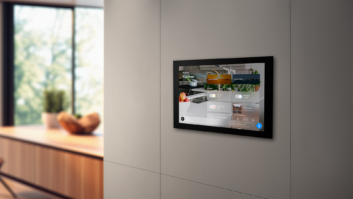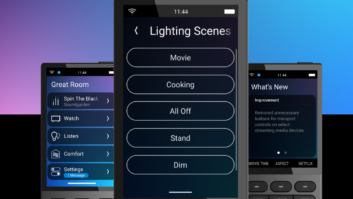Back when I was a golf professional, I gave lessons to people with a variety of skill levels—single-digit handicappers, beginners, kids, high handicappers. And as much as I enjoyed collecting the money for the lesson—and believe me, I did—I truly wanted each student to come away from the 30-minute session with some tip or swing thought that would help their game—a grip adjustment, a better weight shift, or some short game or course management tip to help shave strokes. I could watch people hit golf balls for a few minutes and often identify their fundamental, master key problem, and then work toward fixing it. (Pro tip: if you are a golfer and really want to lower your score, spend twice as much time working around the green as you do the driving range. Nothing lowers scores quicker than mastering putting, chipping, and pitching.)
But despite my best efforts, there were some students that I knew were just never going to get it. Never. Ever. And, bear with me; this will have an application to custom install. I promise.
I had one student that I’ll call Bob, basically because his name was actually Bob. Bob was a Harvard business graduate and a successful accountant. He played several times a week, routinely carding scores in the 130 to 140 range. If you know nothing about golf, know that higher is never better, and par—the target score for a good player—is typically 72.
Where I was apoplectic when I didn’t break 80, Bob was thrilled when he broke 130. Seriously, I think Bob’s bad golf frustrated me more than it did him. And over time, his inability to improve started to wear on me. Each of his strokes over 120 was like another drip in some obscure Saw-like, Chinese water torture that I was subjecting myself to. And with someone so epically terrible, I was sure that I could make him better. I mean, there are like literally dozens of things that someone can do to drop from a million handicap to just an insanely high handicap. I mean, if we could improve his game to just triple bogeying every single hole on the golf course, he would shave like 14 strokes off his game! Dammit, man! Going from the worst player at the club to just a terrible golfer seemed well within his grasp, and I was sure that I could help Bob get there.
During our first lesson, I asked Bob to just hit some balls so I could get a look at his swing. Remember that Seinfeld episode where Elaine tries to dance? That was more graceful than Bob’s swing. It was like a full body seizure, but with less coordination. After it just became too painful to watch him hit balls, I switched to having him work on some drills—one just throwing a ball to feel a proper weight shift. As in, pick up this ball and throw it as far as you can. Bob performed a motion that I assume was cocking his arm back behind his head and then lunged forward in some approximation of a throwing motion, but the ball flew to the ground a few inches in front of his feet.
I think the expression on my face was the dictionary definition for “W…T…F?!?”
Working with Bob was one of the most frustrating experiences I had as a golf instructor, and it was clear to me early on that he just did not have it in him to be even a bad golfer. Ultimately after a few lessons we decided that it wasn’t working and he continued on with his double-par ways.
In a way, working with Bob reminds me of dealing with some of our custom install clients. You can just tell after a few minutes of talking with someone that there are some people that are just never, ever going to understand how their system works. They are confounded by deeply technical industry jargon like “input,” “power,” and “play button” and no matter how many times you go over it, their system is always going to be a jumble of wiring and black boxes that might as well be the Hadron Collider.
With golf, no matter how badly someone wanted it or how much they were willing to pay for it, I couldn’t just give them a good golf swing. They could watch me hit balls, they could listen to me talk about how to hit balls, I could manipulate them into all of the proper positions for making a perfect golf shot, but it wouldn’t matter. And even if I wanted to—and believe me, after several lessons, I really wanted to—I couldn’t just will them a golf swing. There is no secret handshake that lets someone hit a 270-yard drive. Being good at golf requires hours and hours of practice built on a platform of some physical coordination.
But the awesome thing about technology is that you can just give someone not only a good game but a great one. You can hand them the keys to understanding the kingdom. You can give them a single button that handles more technological power than what put man on the moon. And providing they are literate—reading complex text like “Play Movie” or “Watch TV” are, sadly, unavoidable hurdles—they can tame the most complex systems.
I know that we all love advanced control systems; Creston, Savant, Control4, AMX… these are all awesome. And when it comes to whole-house control of lighting and HVAC and security and whatnots, there is nothing better. But one of the real modern-day technological heroes is the humble universal remote control.
The ability to mimic the commands of multiple other remotes and output multiple macro commands from one button press and put needed buttons from disparate devices in easy reach cannot be overstated for what it means to someone that looks at a typical remote control and sees a Mensa exam. A universal remote will improve the performance and usability of any system you install. And since they will be less likely to randomly jab buttons, will probably make the system more reliable as well.
And while the $1000 and up solutions certainly have their place, sometimes they can be like using a Ferrari to drive to the grocery store. Sure it will get you there, but it’s a lot more than you need to get the job done. You will likely be able to make a lot more people happy—and sell more remotes—if you offer a more affordable solution for those times when just a better remote is the master key.

John Sciacca is principal of Custom Theater and Audio in Myrtle Beach, SC.







